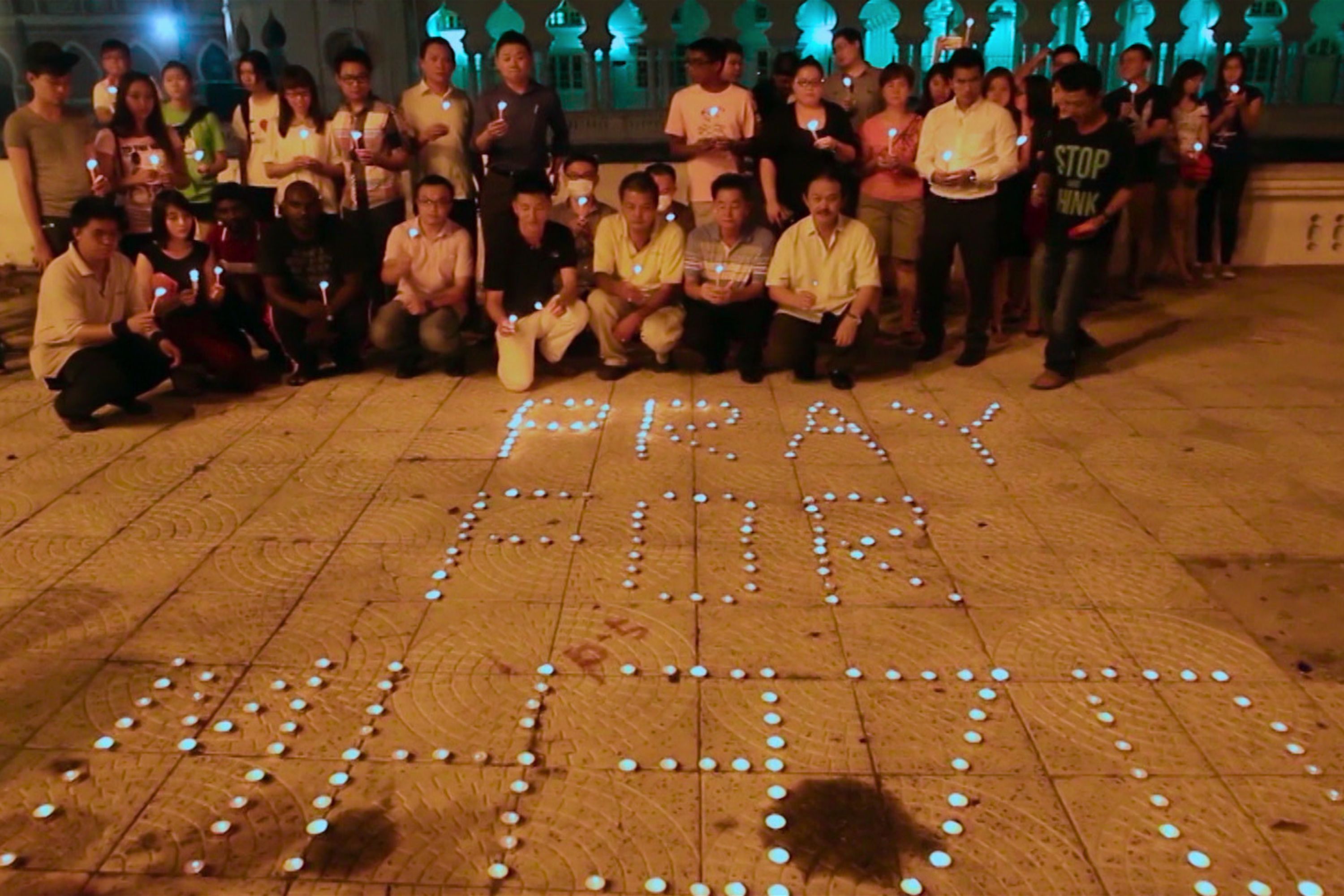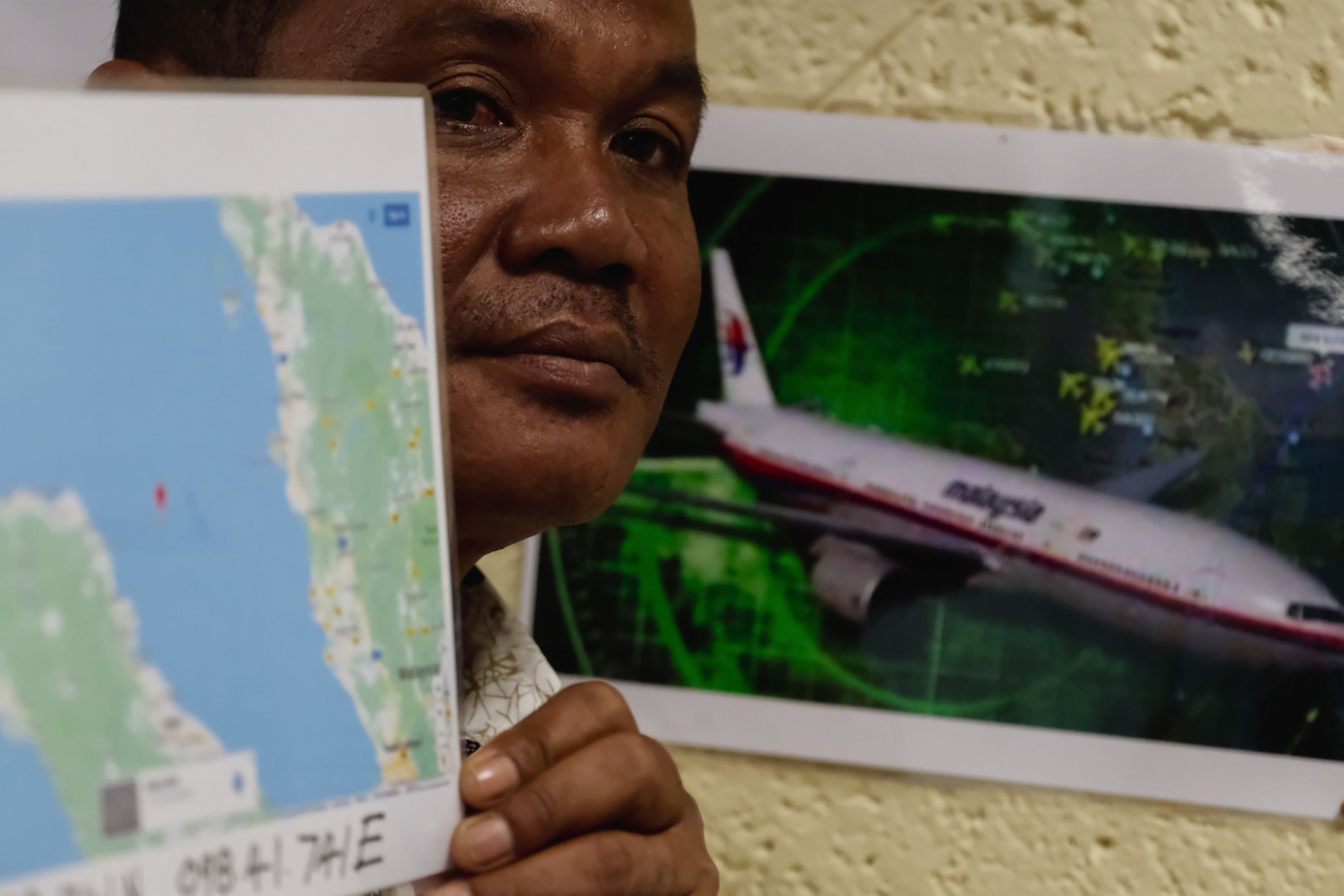What happened to Malaysia Airlines flight MH370 and was it ever found? A new Netflix documentary explores theories surrounding the tragedy
There are relatives who still need answers


As one of modern history's most enduring mysteries, there is ongoing speculation about the doomed Malaysia Airlines flight MH370.
On March 8, Netflix drops a brand new documentary looking at events surrounding the missing Malaysia Airlines flight MH370. The 3-part docuseries, entitled MH370: The Plane That Disappeared, will begin airing all episodes on the 9-year anniversary of the plane's disappearance in 2014. The series is set to recount the aftermath of the plane vanishing, where loved ones of those involved have waited years for a reasonable explanation of what happened that fateful night. Aviation experts, engineers, scientists, journalists, and others, pull together to put forward theories of how a plane managed to be missing for so long, in the modern age of technology. Read on to find out what happened to flight MH370, and what the predominant theories are relating to its fate.
In other documentary news, the release of Finding Michael has been delayed on Disney+ - the show was going to take a look at the disappearance of Spencer Matthews' brother Michael after a trip to Mount Everest. Charles Bronson is currently in legal talks to overturn his life sentence, and we look at what the notorious criminal went to prison for as Channel 4's Bronson: Fit to Be Free? aired. What did George Michael do to be arrested in 1998 was subject to another recent Channel 4 documentary, George Michael: Outed.
What happened to Malaysia Airlines flight MH370?
Flight MH370 took off at 12:41 on March 8, 2014. At 1.07am the Aircraft Communication Addressing and Reporting System (ACARS) that transmits data about the aircraft’s performance, sent its last transmission - it was then switched off.
The last voice communication from the crew happened at 1.19am, with the transponder switched off as the plane was due to enter Vietnamese airspace. At 1.30am, Malaysian military and civilian radar tracked the plane as it turned around and flew southwest over the Malay Peninsula. At 2:22am, Malaysian military radar lost contact with the plane over the Andaman Sea. A satellite in orbit over the Indian Ocean received hourly signals from the flight until 8:11am, when those too, became lost.
Initial searches for the plane took place on the South China Sea. However, closer inspection of the evidence found the flight turned west shortly after the transponder was switched off, switching the search to the Strait of Malacca and the Andaman Sea. A week after the disappearance, analysis of the orbiting satellite signal was still unable to locate the plane, but did suggest two possible routes it could have been on.
The search was subsequently expanded to the Indian Ocean southwest of Australia, Southeast Asia, Western China, the Indian subcontinent, and Central Asia. On March 24, the Malaysian Prime Minister made a statement suggesting further investigation had concluded the flight crashed in a remote part of the Indian Ocean, southwest of Australia. By this time, it was deemed impossible for anyone to have survived the crash.
Parenting advice, hot topics, best buys and family finance tips delivered straight to your inbox.

Was flight MH370 ever found?
Debris from flight MH370 has been positively identified. However, the first piece of debris did not appear until July 29, 2015, when the right wing flaperon washed up on the French island of Réunion.
Sitting 2300 miles west of the Indian Ocean, Australian authorities had been searching the area and found the debris on a beach. Over the following year and a half, 26 more pieces of debris were recovered, turning up in areas ranging from Tanzania, Mozambique and South Africa, to Madagascar and Mauritius. Only three of the 27 pieces have been confirmed to belong to flight MH370, while it is deemed extremely likely the remaining 17 came from the plane.
The way in which the pieces were broken, still didn't determine whether the plane broke up in the air or colliding with the sea - studies did however, find the plane did not experience a controlled descent. In January 2017, Malaysian, Australian, and Chinese governments called off the search for the flight. In July 2018 a final report was issued from the Malaysian government regarding the disappearance. Mechanical malfunction was found to be an unlikely cause, and the unexpected change in flight path had occurred from manual inputs. There was still no definite explanation offered for the reason flight MH370 vanished.

Were bodies of Flight MH370 found?
No bodies from Flight MH370 have ever been recovered. It's recently been speculated that should the wreckage ever be found, the bodies could potentially be preserved, according to experts.
According to The New Daily, the wreck could be preserved "like a time capsule" due to the depth, stillness and temperature of waters in the southern Indian Ocean. US Oceanographer David Gallo said "It can be a very quiet place with very little oxygen. At the surface it’s not the same thing, so the deep ocean can be like a time capsule that preserves everything."
Gallo did suggest however, that should the flight data recorder and cockpit voice recorder ever be located, they might not contain the evidence required to decipher what happened. He said "Even if water gets in there they have ways of getting bits of information off. Now in this case [MH370] it’s a bit different, because the plane was flying for some seven hours, and I don’t know what kind of information would be left on the black box. It keeps rewriting itself. I think the voice cockpit recorder … records over itself after two hours."

Flight MH370: Theories
Theories surrounding the disappearance of Flight MH370 relate to the pilot plotting a murder-suicide, terrorism, and a plot to cover up that the plane was carrying a mysterious cargo.
Zaharie Ahmad Shah, was the 53year-old pilot of the plane. The first theory is that Zaharie depressurized the cabin to kill everyone on board, before dropping the MH370 into the sea. That is as close to the official narrative as aviation experts and scientists have been able to get.
According to the Guardian, American aviation writer William Langewiesche argues that the corrupt Malaysian government knew more about Zaharie’s personal life than they've ever disclosed. Zaharie's home flight simulator was later found to have mapped a similar path to the one detected by radar and satellite data, and one that wasn't the intended path.
A second theory presented by American aviation journalist Jeff Wise, suggests Russian operatives stole the MH370 via the plane’s electronic bay, as a distraction from the Crimean war. Although the satellite data would say this wasn't the case, Wise's counter argument is that it was tampered with as a decoy.
The third theory put forward by French journalist Florence de Changy, speculates the US military shot the plane down over the South China Sea, to prevent a mysterious cargo from reaching China. This theory also suggests the radar sightings and satellite data were fabricated as part of a cover-up. Both this and the hijacking theory also assume washed-up debris was planted. Ghyslain Wattrelos is a French businessman whose lost his wife Laurence, 17-year-old son Hadrien, and 13-year-old daughter Ambre, and he strongly supports de Changy's theory in his search for closure on what happened to his family.
Of the theories, documentary director Louise Malkinson said "These are people that have been involved in the story from the very beginning, and they are questioning what has been deemed the official narrative. They’ve written extensively on it, they’ve done a huge amount of research, and yes, they may be joining their dots together in a way that people don’t agree with, but they have definitely put the time and effort into it, and they are posing questions that haven’t necessarily always been answered."
She continued to add "I know that some of the theories are more far-fetched than the others, but I think what’s the most important thing for me is that the next of kin still don’t have all the answers, and that actually this mystery hasn’t been solved. I think that we can’t be in a world that a 777 has gone missing and it’s very tragic and we have to move on – that shouldn’t happen."
Related Netflix Features:
- Is Fall based on a true story? As the survival thriller starts streaming on Netflix, viewers have questions
- Fall ending explained: What happened to Becky at the end of the Netflix survival thriller?
- Where is Fall filmed? Locations featured in the Netflix survival thriller
- Outer Banks season 3 ending explained, plus everything we know about season 4 of the Netflix hit
- Is The Strays a true story? Real inspiration behind the Netflix mystery thriller
- The Strays ending explained: What happened to Neve in the Netflix mystery thriller?
- Lockwood & Co. ending explained: Everything that happened in the finale of the Netflix detective thriller
- Will there be a season 2 of Lockwood & Co? Speculation and everything we know so far about the return of the Netflix mystery thriller
- Will there be a That ‘90s Show season 2? Speculation, and everything we know so far
- When is Wednesday season 2 coming out? Release date speculation of the Netflix dark comedy
Video of the Week

Lucy is a mum-of-two, multi-award nominated writer and blogger with six years’ of experience writing about parenting, family life, and TV. Lucy has contributed content to PopSugar and moms.com. In the last three years, she has transformed her passion for streaming countless hours of television into specialising in entertainment writing. There is now nothing she loves more than watching the best shows on television and sharing why you - and your kids - should watch them.